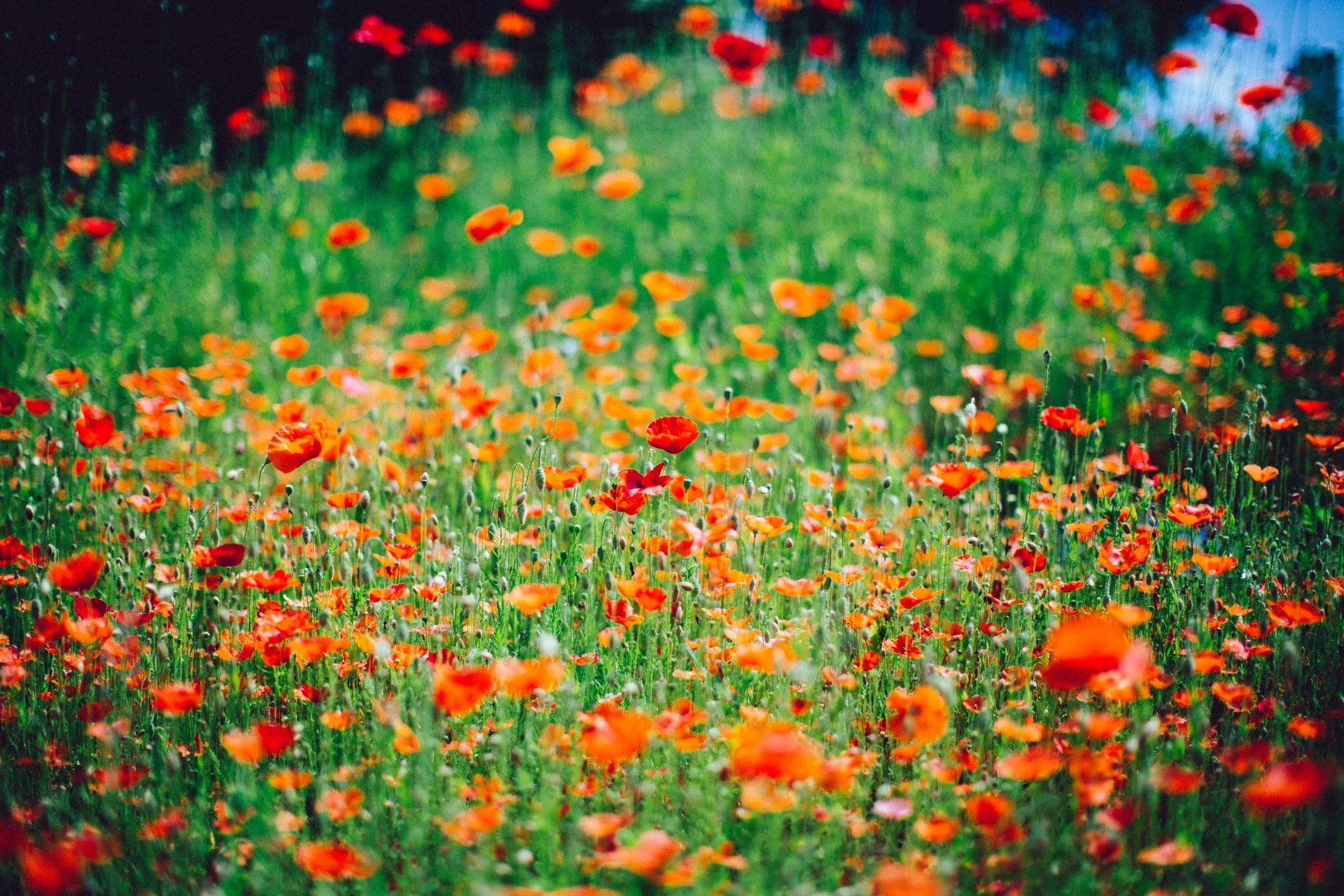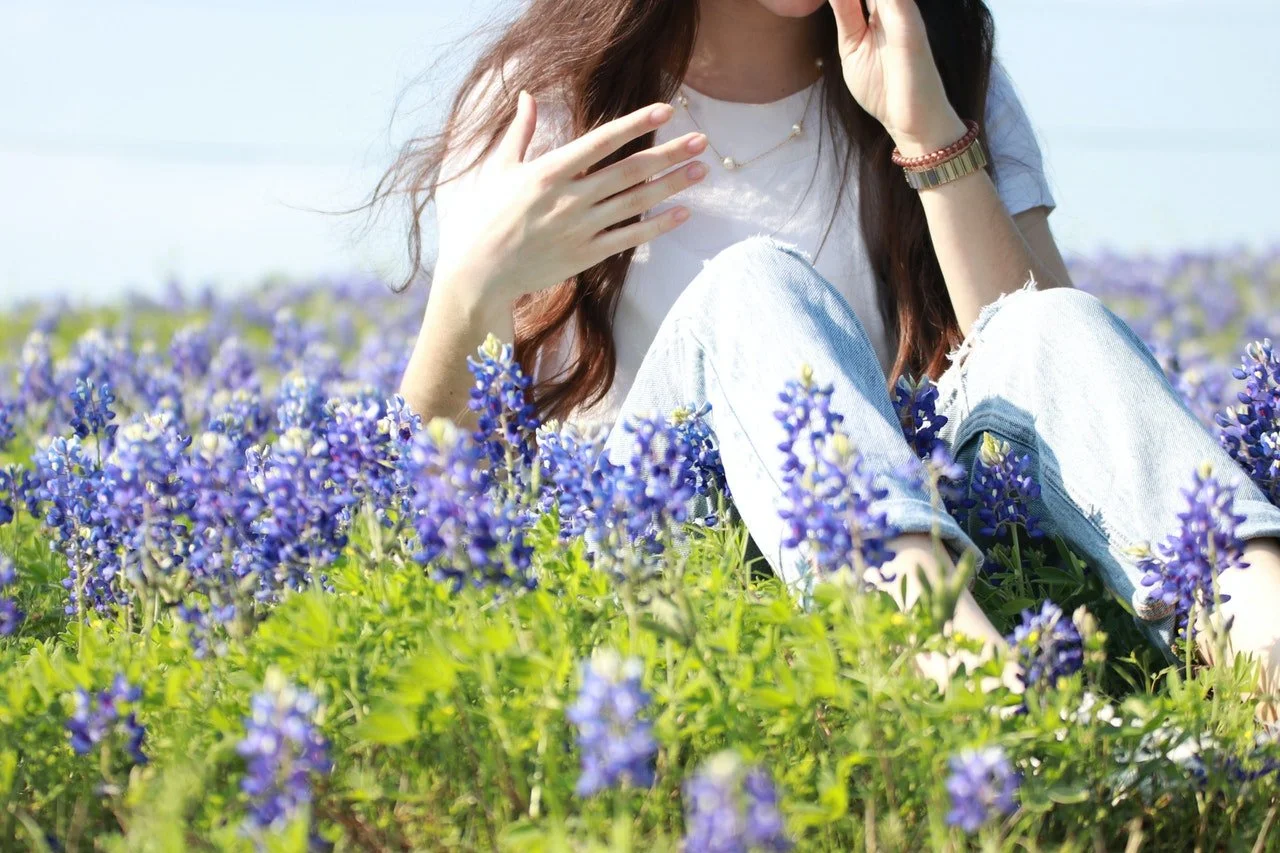Bluebonnets Are The Joy We Need In Our Lives Right Now
Discover > Truly Texan > Bluebonnets Are The Joy We Need In Our Lives Right Now
For the countless Texans still dealing with the outcome of last month’s devastating winter storm, there is a ray of hope. Spring is just around the bend.
And with it comes the spectacular show of swaying bluebonnets lining fields and dousing the state’s roadways in shades of purple and blue.
But wait, the flowers this year, like the last, were already running ahead of schedule. We spotted a bunch (hardly a lot) along White Oak Bayou near 34th Street in The Heights back in January, and the effects of global warming were apparent. Texas’s state flower typically blooms in the latter part of March through April, welcoming spring as they arrive. An unusually warm winter meant the bluebonnets were getting here sooner than expected.
Then came along another ramification of climate change.
Uri.
The deep freeze wiped out plants and vegetation and spelled disaster for the state’s infrastructure, but it may have just spared the bluebonnets. All that snow worked in favor of the wildflowers, acted as an insulator, and saved the plants from the freezing temperatures. Texas bluebonnets weathered the winter quite nicely as the cold reset them to bloom more in line with their regular timetable.
The Central Texas bluebonnet season typically peaks in April, so after enduring that bleak and mysterious winter spell, Texans can look forward to the familiar joys of a dazzling spring wildflower season.
Wildflowers in Texas and How the Bluebonnet Came to Be the State Flower
Nature’s palette mesmerizes Texans every spring. We witness sapphire blue, citrus yellow, scarlet red, fiery orange, iris purple, and powder white in all its technicolor splendor. Every year, pastures, easements, and meadows along Texas roadways erupt into a phenomenal exhibit of wildflowers. Viewing them is a favorite springtime interest for Texan nature enthusiasts. There are even hotlines at the Texas Department of Transportation and at the Lady Bird Johnson Wildflower Center, where you can call to ask about sightings of yellow black-eyed Susans, red-and-pale Indian blanket, luminous-purple winecups, and deep red Drummond phlox.
Read on here to know more about the splendid seasonal blooms Texas has to offer!
The state’s designated flower is the bluebonnet. In 1901, the bluebonnet went up against the prickly pear and the cotton ball to claim Texas’s official state flower. But not many were thrilled about the Lupinus subcarnosus species that won. In 1971, the state added that all bluebonnet varieties would be the official state flower(s).
But not everything is breezy in the wildflower world. The vigor of the spring bloom is not a sign of the general health of their environment. The fact that flowers bloom at all is an indicator of the teamwork of nature’s elements and the plants’ genetic durability. It is also proof of efforts by a small group of people who work against the odds that native flowering plants remain.
While people assume that all wildflowers are native to Texas, these flowers have become increasingly endangered over the past two decades.
Why You Ask?
The relentless growth of intruder plants like the bastard cabbage and 79 other harmful invasive plant species multiply, take up the flowers’ space, and smother them into extinction. If left to grow freely, invasive plants produce thick groundcover that thwarts the germination of native wildflowers.
Intruder creeper vines like the Japanese mimosa and the Asian Jasmine may look very aesthetic, but they prevent natives from thriving, and birds don’t benefit from them. There is a need to be educated on identifying, locating, and uprooting intruder plants.
The citizen scientist program of texasinvasives.org is a program that trains volunteers to seek and report invasive plant species in Texas. With over 2,400 volunteers, the program aims to train participants to identify, scout for, and locate pesky vines that threaten the wildflowers. Citizens also provide crucial data to local and national resource managers, who respond appropriately to control the spread.
Best Places to Enjoy Bluebonnets in Texas
While Texas bluebonnets can be found almost anywhere during the right time of the year, some areas are definitely better than others for wildflower viewing. If you want to join in on the tradition and see the fanciest fields, here are the best places to enjoy watching bluebonnets in Texas.
ENNIS
Ennis is home to the Ennis Bluebonnet Trails and Festival. During April, there is an entire trail network and a festival devoted to the blooms.
The bluebonnet trails sprawl out in all directions and total up to 40 miles! Ennis is officially the Bluebonnet City of Texas, and some residents even commit their time to check on the blooming status of these flowers until the festival commences.
Ennis is only half an hour outside of the Dallas area, so it makes for a fun afternoon trip! However, with the cold snap the state has seen, we would recommend Ennis for April.
FREDERICKSBURG
Fredericksburg is a quaint small town to the west of Austin. This town is famous for its German roots and its wineries! The picturesque nature of this area is perfect for a weekend getaway. There is the Lyndon B. Johnson State Park and Historical Site, and the Wildseed Farms grow expanses of wildflowers and harvest the seeds.
If you are looking for additional wineries with breathtaking scenery, please visit this link!
LLANO
If you keep driving onwards from Fredericksburg, you’ll reach the small town of Llano. With a population of under 4,000, it’s a relatively small town, but it’s the perfect place for the wildflowers to come up every season. Tons of Indian Paintbrush and bluebonnets can be spotted here.
An extensive trail called The Highland Lakes Bluebonnet Trail spans multiple cities and cuts through this part of town.
Llano is the best place if you hit dirt roads and want to be away from the crowds, as most of them head towards Burnet.
ATASCOSA COUNTY
Home of the annual Strawberry Festival, the small town in Poteet has the most welcoming residents in Texas. The wildflowers here can be remarkable, with plenty of Sandyland Bluebonnets and Paintbrush. The last week of March should be perfect for this area.
WASHINGTON COUNTY
Poorly behaved visitors and overcrowding lead to the mowing down of massive fields in Brenham in 2019. Highway 290 generally has terrific displays alongside it, but traffic can be a problem in this area. Hit the back roads to find some unspotted locations, and you won’t be disappointed.
5 Tips for Enjoying Bluebonnet Watching in 2021
This year is going to be a delayed blooming season. So, take your time in going bluebonnet watching.
Go mid-week to avoid crowds.
Keep your eyes open for updates on local websites that are hosting bluebonnet festivals.
Don’t pick the wildflowers! Much better to take some beautiful pictures, and leave the rest for the bees & insects.
Keep your batteries fully charged!
Be respectful to the nature around you and the other visitors.
WEAR YOUR MASK!





